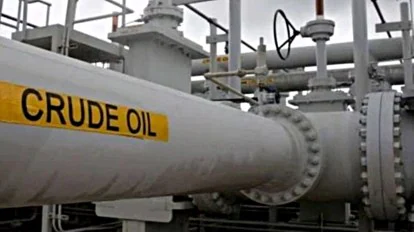Rising Energy Demand and Stagnant Production
India’s energy consumption has been on an upward trajectory for years, fueled by the increasing needs of the transportation, industrial, and residential sectors. However, domestic oil and gas production has stagnated, creating a substantial gap that imports are required to fill. Crude oil imports, for instance, jumped from 115.9 million tonnes in the first half of the previous fiscal year to 120.5 million tonnes in H1 of FY25.
With rising global oil prices, this heavy reliance on imports impacts India’s economic stability, leading to potential disruptions from international market fluctuations. The implications are vast, not only for the economy but also for India’s energy security, as the nation is increasingly vulnerable to external shocks.
Analyzing India’s Growing Import Dependency in 2024
India’s crude oil and natural gas import trends reveal a clear increase in reliance on international markets. The recent spike in natural gas dependency, from 46.8% to 51.5% in one year, highlights the growing challenges in meeting domestic energy demand through local resources.
The rise in imports is particularly concerning given the country’s ambitious growth targets. India’s domestic production has struggled to keep pace due to aging oil fields, limited new discoveries, and regulatory delays. This ongoing trend underscores the urgent need for a comprehensive approach to achieving energy self-sufficiency.
Challenges Limiting Domestic Oil and Gas Production
Several factors contribute to India’s stalled domestic production of oil and natural gas:
- Aging Infrastructure and Oil Fields: Many of India’s oil fields are mature, making extraction increasingly difficult and expensive. As output from these fields declines, new discoveries are essential to meet demand.
- Regulatory Hurdles and Delays: India’s energy sector is often slowed down by complex regulations, environmental clearances, and bureaucratic delays that hinder timely development of new projects.
- Investment and Technology Constraints: While investments have increased, domestic production still lags due to the lack of advanced technologies and high extraction costs, making imports more financially viable in comparison.
- Increasing Demand: The growing demand for energy, particularly in urban and industrial sectors, has outpaced India’s production capacity, forcing the country to rely on imports to bridge the gap.
Economic Implications of High Import Bills
India’s dependence on imported oil and natural gas has significant economic ramifications:
- Rising Import Bills: The increasing reliance on imported energy puts pressure on India’s foreign exchange reserves. Fluctuating oil prices further intensify the burden, making it harder to predict and manage energy expenses.
- Impact on Inflation and Trade Deficit: High import bills can lead to inflationary pressures and increase the trade deficit, which in turn affects the value of the Indian rupee. This puts added strain on the economy and creates an unstable business environment.
- Energy Security Risks: India’s over-dependence on imports leaves it vulnerable to geopolitical tensions and disruptions in the global oil and gas supply. Any instability in key oil-exporting countries can lead to supply shortages and price spikes.
Pathways to Reduce India’s Import Dependency
Reducing import dependency is essential for both economic stability and energy security. Here are some viable strategies India could consider:
- Investing in Domestic Production: Increasing investment in domestic oil and gas exploration can help improve production levels. This requires streamlining regulations and providing financial incentives for both public and private sector players to explore untapped resources.
- Transitioning to Renewable Energy: India has already made strides in renewable energy, but there is potential to accelerate this transition. By investing in solar, wind, and hydroelectric power, India can reduce its reliance on fossil fuels and build a cleaner, more sustainable energy base.
- Promoting Natural Gas as a Bridge Fuel: As a relatively cleaner fossil fuel, natural gas can serve as a transitional energy source. Investments in LNG terminals and pipeline infrastructure can facilitate greater use of natural gas in industrial and residential sectors.
- Improving Strategic Oil Reserves: Expanding India’s strategic oil reserves provides a cushion against global price fluctuations and supply disruptions. Building reserves not only ensures a steady energy supply but also enhances India’s bargaining power on the international stage.
- Boosting Energy Efficiency: Encouraging energy efficiency across sectors, particularly in industries and transportation, can help reduce overall demand. Implementing energy-saving measures can alleviate pressure on imports and support a more sustainable growth path.
The Need for Energy Self-Reliance
India’s rising oil and gas imports present a pressing challenge for policymakers. To ensure long-term energy security and economic resilience, India must focus on self-sufficiency. Reducing import dependency involves not only enhancing domestic production but also accelerating the transition to renewable energy, promoting energy efficiency, and strengthening strategic reserves.
As one of the world’s largest energy consumers, India’s path to energy independence requires bold reforms, investment in technology, and a commitment to sustainable growth. Achieving energy self-reliance is crucial not only for meeting the demands of a growing economy but also for securing India’s place as a stable and resilient global economic power.


Leave a Reply